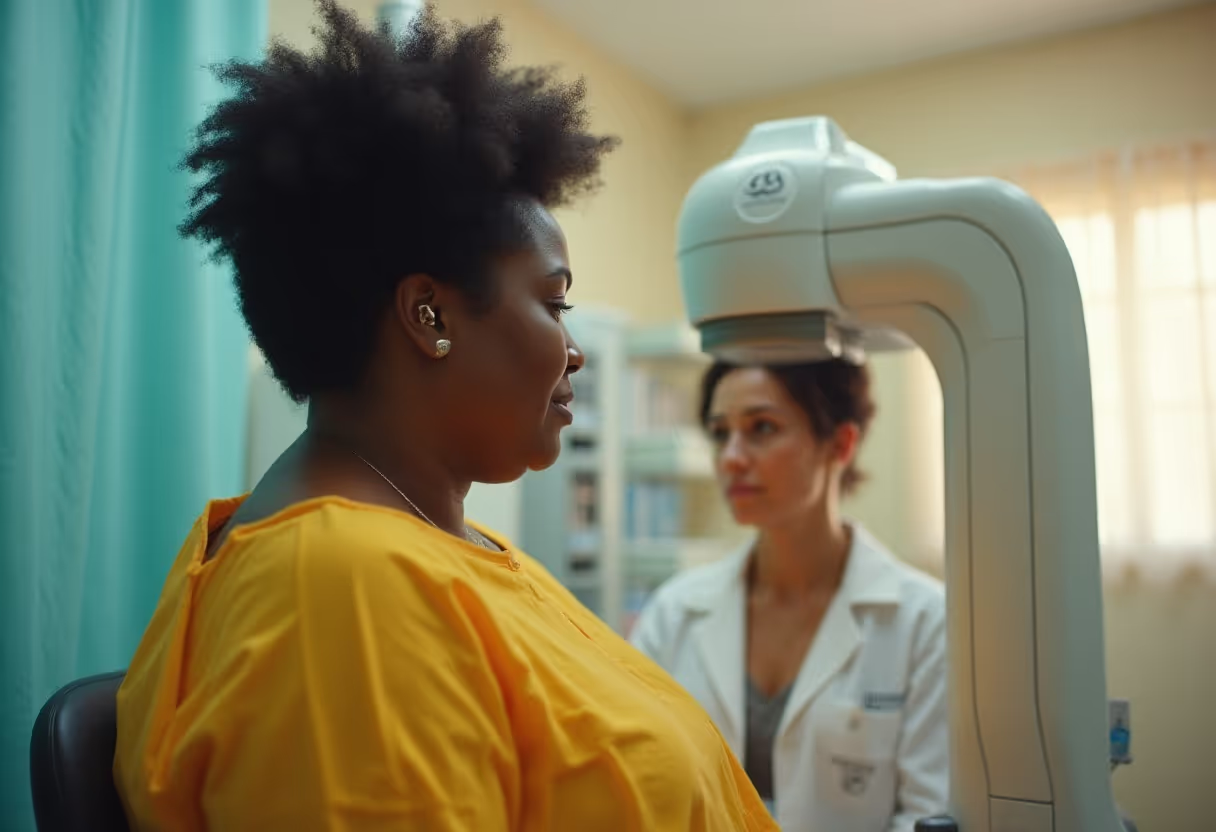Breast Augmentations and Early Cancer Prevention: What Every Woman Should Know

Breast augmentation is one of the most common cosmetic procedures performed today, helping women feel more confident, balanced, and empowered in their bodies. But alongside the decision to enhance your figure comes an equally important conversation about your ongoing breast health.
At Bliss, we believe beauty and wellness go hand in hand. Understanding how breast implants relate to breast cancer awareness and early detection helps you make informed, confident decisions about your care, both now and in the years ahead.
How Breast Augmentation Relates to Breast Cancer Awareness
Let’s start with an important fact: breast implants do not increase your risk of developing breast cancer.
Extensive study and decades of follow-up have shown that having implants, whether silicone or saline, does not increase your chances of developing the disease.
However, it’s still important to stay aware and keep up with regular checkups. Having implants doesn’t replace the need for self-exams, mammograms, or doctor visits. In fact, being proactive about your breast health after surgery is even more important, since early detection makes the biggest difference.
If you’re considering surgery or want to learn more about the procedure itself, you can also explore our Breast Augmentation page for detailed information on options, recovery, and long-term care.
Can Implants Affect Early Detection of Breast Cancer?
While implants do not increase the risk of cancer, they can complicate detection. During a mammogram, the implant may hide some of the breast tissue, making it more difficult to obtain quality images of all areas.
That’s why it’s important to inform your imaging center that you have breast implants when booking a mammogram. Radiologists use a method known as implant displacement views, which involves gently moving the implant aside to scan more of the native breast tissue. This approach produces a sharper, more accurate picture and allows for proper screening.
Other imaging techniques, such as ultrasound or MRI, can be utilized to improve clarity, particularly for women with dense breast tissue or a family history of breast cancer.
The idea is to choose an experienced imaging center that has worked with patients who have implants. A trained radiology team will understand how to position and interpret your results for maximum precision.
The Role of Your Plastic Surgeon in Preventive Health
Your path to breast enhancement begins with a conversation, not about size or shape, but about your general health history.
During your consultation, your plastic surgeon should ask about your personal and family history of breast or ovarian cancer. This information might help you plan your surgery as well as your regular screenings.
Effective communication among your plastic surgeon, primary care physician, and oncologist (if applicable) ensures that everyone on your care team is on the same page. Your surgeon can also assist you in developing a personalized screening regimen, including when to resume mammograms after surgery and how frequently to check your breast health over time.
At Bliss, we embrace a collaborative approach because beautiful outcomes start with your health.

Breast Implant-Associated Anaplastic Large Cell Lymphoma
Another important but rare topic is Breast Implant-Associated Anaplastic Large Cell Lymphoma or also known as BIA-ALCL. This is not breast cancer, but a type of lymphoma that can develop in the scar tissue or fluid surrounding the implant, most commonly associated with textured implants.
BIA-ALCL remains extremely rare, and when detected early, it’s highly treatable. Symptoms may include swelling, lumps, or changes in breast size or shape, often years after the surgery.
That said, the FDA and medical community continue to monitor implant safety closely, and advancements in design and materials have greatly reduced risks. Today, most surgeons prefer smooth implants, which have not been linked to BIA-ALCL.
Your Bliss surgeon will discuss all options and safety updates with you, ensuring you make a fully informed choice.
Tips for Early Detection and Ongoing Breast Health
Maintaining your breast health after augmentation is all about consistency and awareness. Here’s how to stay proactive:
- Schedule Regular Screenings: Mammograms should typically resume about six months after surgery, once healing is complete.
- Perform Monthly Self-Exams: Familiarity with your new shape will help you notice subtle changes early.
- Adopt Healthy Habits: Balanced nutrition, regular exercise, and limiting alcohol can all support breast tissue health and hormonal balance.
- Create a Health Tracking Plan: Note your exam dates, mammogram results, and any changes you observe over time.
These small, mindful steps can make a lasting difference in both peace of mind and long-term health.
When to Contact Your Doctor
Never be afraid to reach out if something doesn't feel right. Watch out for the following warning signs:
- Unexplained or persistent swelling.
- Pain or tenderness that doesn’t improve.
- Noticeable changes in breast shape or firmness.
- Fluid buildup around the implant.
Your doctor, or your Bliss Care Concierge, is here to help you with any concerns. It's always a good idea to check in early, whether you have a routine question or anything urgent.
FEATURE OF THE WEEK
Subscribe for cosmetic insights.
Get the latest in aesthetic innovation, support, and self-love straight to your inbox.












Lorem ipsum dolor sit amet, consectetur adipiscing elit. Suspendisse varius enim in eros elementum tristique. Duis cursus, mi quis viverra ornare, eros dolor interdum nulla, ut commodo diam libero vitae erat. Aenean faucibus nibh et justo cursus id rutrum lorem imperdiet. Nunc ut sem vitae risus tristique posuere. uis cursus, mi quis viverra ornare, eros dolor interdum nulla, ut commodo diam libero vitae erat. Aenean faucibus nibh et justo cursus id rutrum lorem imperdiet. Nunc ut sem vitae risus tristique posuere.
DeleteLorem ipsum dolor sit amet, consectetur adipiscing elit. Suspendisse varius enim in eros elementum tristique. Duis cursus, mi quis viverra ornare, eros dolor interdum nulla, ut commodo diam libero vitae erat. Aenean faucibus nibh et justo cursus id rutrum lorem imperdiet. Nunc ut sem vitae risus tristique posuere. uis cursus, mi quis viverra ornare, eros dolor interdum nulla, ut commodo diam libero vitae erat. Aenean faucibus nibh et justo cursus id rutrum lorem imperdiet. Nunc ut sem vitae risus tristique posuere.
Delete